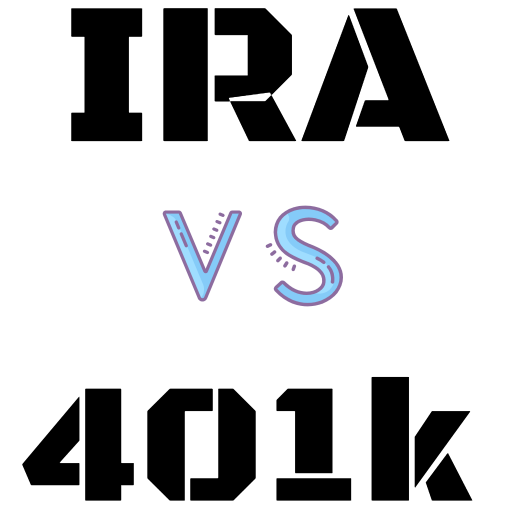
……………………………………………………….
First, let’s talk about why the Roth IRA is so powerful.
Roth IRAs became available in 1998. Prior to that time, the primary way to save for retirement was in a traditional IRA which was introduced in 1974.
Traditional IRAs are initially tax-deferred, meaning there are no taxes due until the money is withdrawn during retirement. When a withdrawal is taken, it is taxed as income. Required Minimum Distributions from traditional IRAs previously began at age 70.5, but this was changed to age 72 by the SECURE Act in December 2019.
I have many clients who have saved diligently in a traditional 401(k) through their employer for many years, and the accounts can grow quite large. When these clients retire, they are often surprised that their withdrawals are taxed as income, along with their Social Security benefits, pension income, and investment income. They are unhappy that the IRA withdrawals are taxed as income, which keeps them in a higher-than-expected tax bracket during retirement.
Roth IRAs are different. The money in a Roth IRA grows tax-free during your working years, and it is also tax-free when you withdraw money during retirement. Another plus is that there are no Required Minimum Distributions. This allows the investor to leave the money in a Roth IRA longer, while it is growing and compounding tax-free. Tax-free growth over many years is the power of the Roth IRA. Tax-free is far better than tax-deferred.
Lower future taxes
There are additional benefits due to Roth IRA withdrawals not being taxed. Lower income during retirement may lead to less of your Social Security benefits being taxed each year, and lower IRMAA (Income-Related Monthly Adjustment Amount) payments.
These are the Medicare premium surtaxes on Medicare Part B, and the surtax ranges from $59.40 to $356.40 per month for 2021 based upon adjusted gross income. IRMAA also impacts Medicare Part D.
Start filling your tax-free bucket
The diagram shows three tax buckets that contain most investment accounts.
• Bucket #1 is the tax-deferred bucket, containing traditional IRAs, 401(k)s, and 403(b)s.
• Bucket #2 is your taxable bucket, containing taxable investment accounts and bank accounts.
• Bucket #3 is the most important bucket because it is the tax-free bucket, containing Roth IRAs, Roth 401(k)s and Roth 403(b)s. Bucket #3 is the one I encourage you to fill during 2021.
During the past 10 years, many employers have started offering a Roth 401(k) or Roth 403(b) along with their traditional 401(k) and 403(b). This is a great opportunity to start filling your Roth bucket. The contribution limits to these accounts is not changing in 2021. For someone under 50, the contribution limit is $19,500, and for anyone 50 and over the limit is $26,000. If your employer matches a part of your contribution, that is even better!
Changing your retirement contributions from the traditional portion to the Roth portion is easy. Contact your benefits department and ask if there is a form you need to fill out. In some cases, you can make the change online. I encourage you to switch your entire contribution to the Roth portion.
One significant downside in contributing to a Roth 401(k) or Roth 403(b) is that you do not receive a tax deduction in the year of the contribution, as you do for a contribution to a traditional 401(k) or 403(b). If you are concerned that the loss of this tax deduction will be substantial, then change your election so that half your contribution goes to the Roth portion and half goes to the traditional portion. In my experience with clients, the loss of that tax break is not substantial, and the fact that they are quickly filling up their Roth tax bucket provides a greater long-term benefit. Your employer – or the administrator of your 401(k) or 403(b) – will track your contributions between the traditional plan and the Roth plan. When you retire, the amount contributed to the Roth plan can be transferred to a Roth IRA, and the amount contributed to the traditional plan can be transferred to a traditional IRA.
The SECURE Act had one very negative feature. It requires that non-spouse beneficiaries of traditional IRA and Roth IRAs withdraw all the money within 10 years. Previously, a non-spouse beneficiary could take required withdrawals over their lifetime, but the new rule is 10 years. This does not impact an IRA or Roth IRA that is left to a spouse. It only impacts non-spouse beneficiaries. If an investor leaves a large traditional IRA to an adult child, the full amount must be withdrawn within 10 years, and the full amount is taxed as income to the beneficiary when it is withdrawn. With a Roth IRA, the account must still be withdrawn within 10 years, but the withdrawals are tax-free. This is another benefit of the Roth IRA – or Roth 401(k) or Roth 403(b).
I recognize that managing your investments wisely feels overwhelming to many people. During 2021, I intend to focus my articles on small changes you can make that will have a big impact on your financial security. Starting to fund the Roth 401(k) or Roth 403(b) through your employer’s plan in early January will help you build your tax-free Roth bucket. Happy New Year!
Donna Skeels Cygan, CFP, MBA, is the author of “The Joy of Financial Security.” She has been a fee-only financial planner in Albuquerque for over 20 years, and is the branch manager for the Mercer Advisors office in New Mexico. Contact her at dscygan@sagefuture.com.
